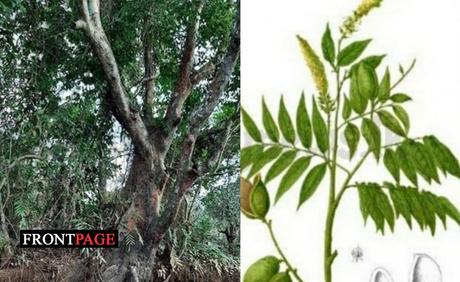 The Ministry of Environment has observed in some media and social media that the Crudia Zeylanica plant has been removed from the 2020 Red Data List.
The Ministry of Environment has observed in some media and social media that the Crudia Zeylanica plant has been removed from the 2020 Red Data List.
But there is no truth in those media reports. The Ministry of Environment emphasizes that the Crudia Zeylanica plant has not been removed from the 2020 Red Data List.
In the Red Data List published in 2012, five extinct plants from Sri Lanka were included in the Red Data List.
They were: (I) Rinorea decora (Violaceae), (II) Rinorea bengalensis (III) Crudia zeylanica (Fabaceae) (IV) Strobilanthes caudata (Acanthaceae), (V) Blumea angustifolia (Asteraceae).
However, in the Botanical Surveys conducted after 2012, three species of Rinorea decora (Violaceae), Rinorea bengalensis, and Crudia zeylanica (Fabaceae) have been re-surveyed in compiling the Red Data List of 2020 Plants.
Crudia zeylanica is one of them. It was this plant that caused the greatest controversy in the construction of The Central Expressway. But this plant was identified in several other places in the country later.
Therefore, the plant is no longer considered an extinct species from Sri Lanka. However, the plant is not removed from the red data list. It is further included in the Red Data List as the next classification as critically endangered plant.
Ministry said that Strobilanthes Caudata (Acanthaceae), Blumea angustifolia (Asteraceae), which are considered extinct in Sri Lanka have been included in the 2012 Red List. The two plant species are also listed as endangered in the 2020 Red Data List.
Doona ovalifolia (Dipterocarpaceae) and Alphonsia hortensis (Annonaceae) are included in the 2012 Red Data List of Extinct in the Wild (EW) . Eugenia xanthocarpa (Myrtaceae) is currently listed in the 2020 Red Data List as Extinct in the Wild. Alphonsea hortensis and Eugenia xanthocarpa are currently cultivated in the collection of living plants at the Royal Botanic Gardens, Peradeniya.
